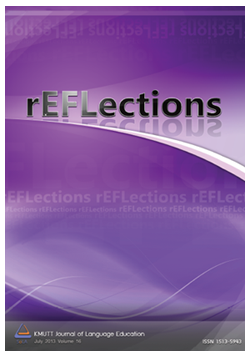Narrative Structure and Distribution of Verbal Morphology in the Interlanguage of Thai Learners of English
Main Article Content
Abstract
Describing learners’ systematic variation in tense use, the Interlanguage Discourse Hypothesis predicts that language learners use emerging verbal morphology to distinguish foreground and background in narratives (Bardovi- Harlig, 1994, p.43). Testing this hypothesis, the present study investigates whether Thai EFL learners exhibit different rates of use of past tense in the foreground and background of their narratives. It was found that, in both oral and written narratives of the learners, rates of use of past tense are greater in foreground than background. Unlike native speakers who show a high use of past tense equally in foreground and background, the learners tend to employ past tense in the foreground while using non-past forms with essential competition between the present simple and base forms in the background. The study provides empirical support to the Interlanguage Discourse Hypothesis and sheds light on the difficulty experienced by L2 learners in acquiring the L2 tense system.


